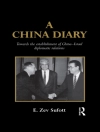
Taking account of its evolution in recent decades, this book provides an up-to-date account of the role of the Civil Service in the UK.
The book offers a much-needed re-examination of the function and role of the Civil Service and considers the ways in which it has changed in response to today’s pressures. It examines the changing relationships between ministers, civil servants and special advisers (sp ADs), as well as investigating challenges to the principles of the Civil Service such as service outsourcing, COVID-19 responses and Brexit.
Asking whether the practices of the past are effective for the future, this book is a vital resource for undergraduate and postgraduate students of UK politics, public administration and public sector management.
विषयसूची
Abbreviations
Preface
Introduction: What is the Civil Service For?
Introduction
The role of the civil service: an international context
How does the civil service relate to the constitution?
Is the senior civil service politically aligned?
Does the civil service have a public service or public
value obligation?
What qualifications, skills and training do civil servants have?
Pressures for reform
The civil service in the UK
How does the civil service relate to the constitution?
Is the Senior Civil Service politically aligned?
Does the civil service have a public service or public
value obligation?
What qualifications, skills and training do civil servants have?
Pressures for reform
Conclusions
What Kind of Civil Service do we Have? The Structure
of the Home Civil Service in England
Introduction
How many civil servants?
Tripartite structure of the civil service
Implementing the GPA: competition in central government
The Senior Civil Service
Functional departments
Operational departments
Issues for the civil service as an employer
Recruitment and retention
Training and development
A career for life?
How Does the Civil Service Develop Policy?
Introduction
What is policy?
What stimulates policy development?
International agreements and obligations
Political manifestos
Sofa government
External shocks: climate and humanitarian catastrophe,
economic turbulence, war
Royal Commissions and government committees
His Majesty’s Inspectorates and coroners’ reports
Domestic events: dangerous dogs,
NHS failures
Forthcoming elections – general and local
Ministerial entrepreneurialism
Members’ ballots and individual campaigns
Donors
Lobbying by think tanks and APPG
Petitions and public demonstrations
Deliberative assemblies
Policy bandwagons
Who makes policy – ministers or civil servants?
How are policies constructed?
Recycling past approaches with new names
Copying another country – policy transfer and convergence
Policy communities and networks
Evidence based on pilots or previous policy roll out
Conclusions
How Does the Civil Service Administer Policy?
Introduction
The context for the administration of policy
Administration vs implementation and delivery
Issues to be considered when designing the administration
of policy
Demand management
Competing policies
Regulation
Redistribution
Short or long term
Determining the mechanism for delivery
King’s speech
Machinery of Government
Spending reviews
लेखक के बारे में
Janice Morphet is a Visiting Professor at University College London. She has over fifty years of experience in local and central government as well as academia and has written and researched about Brexit, Covid, outsourcing, devolution and public services.











